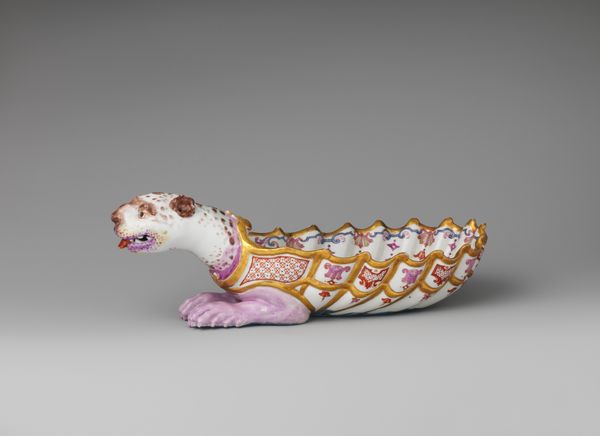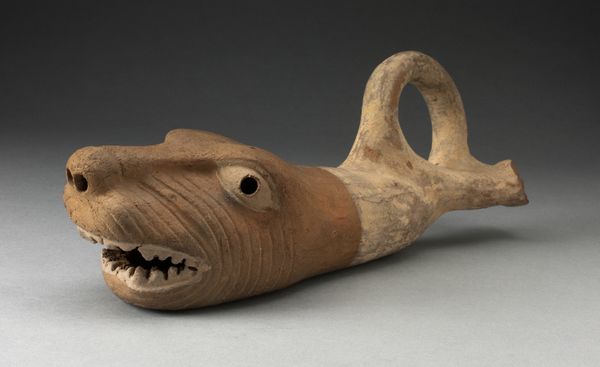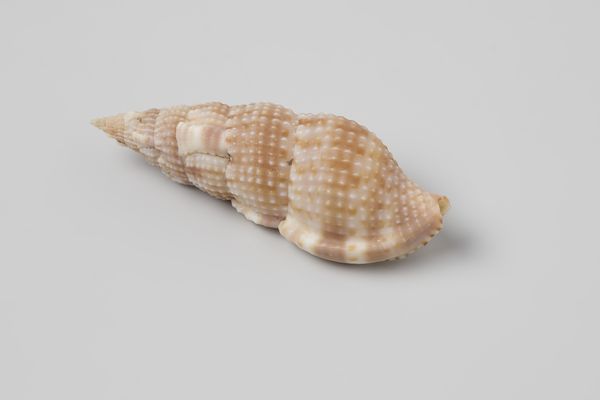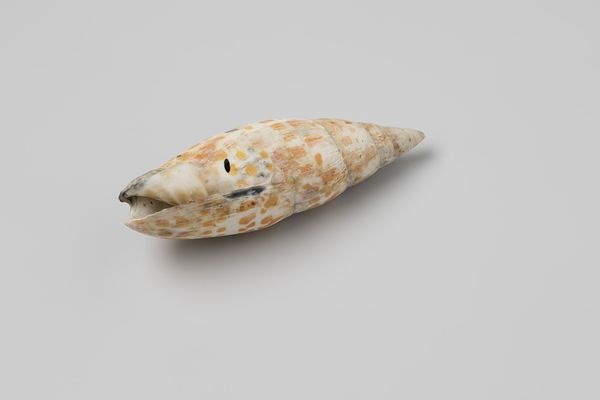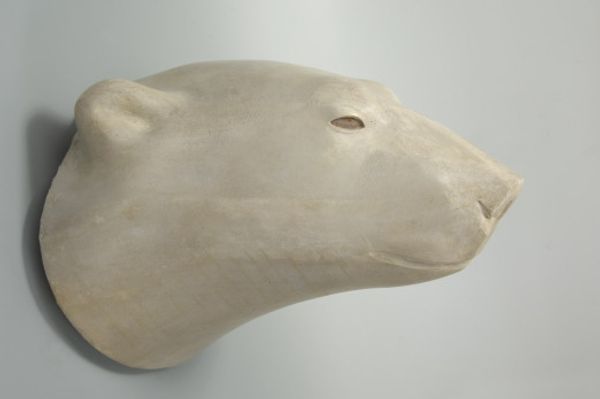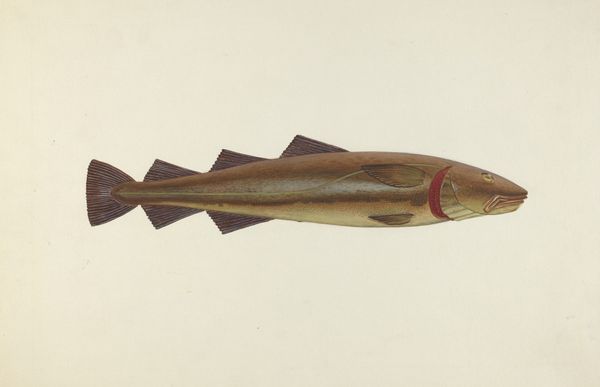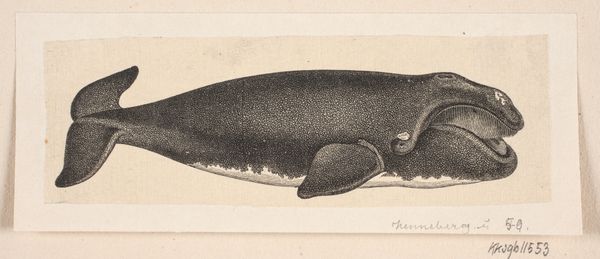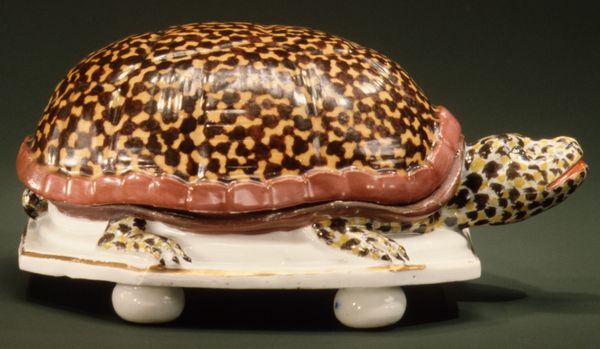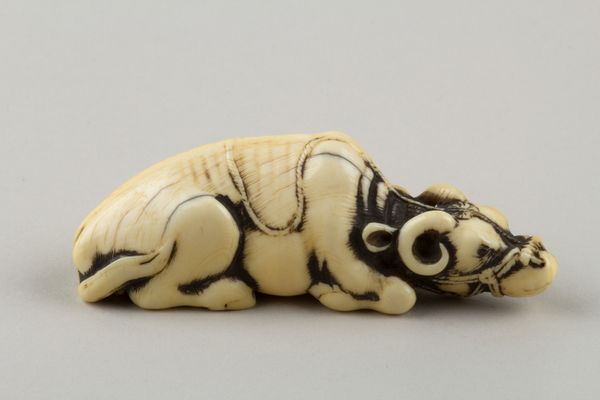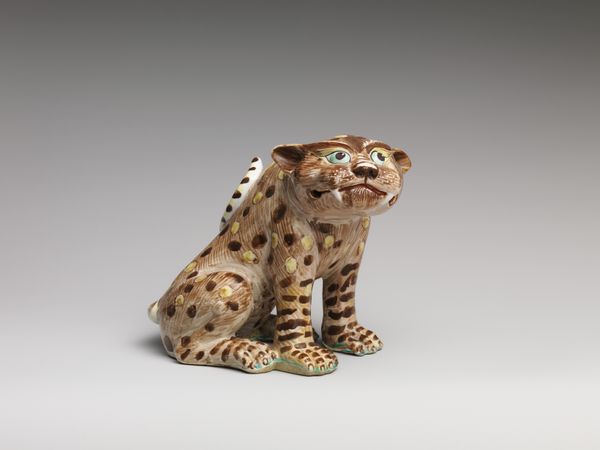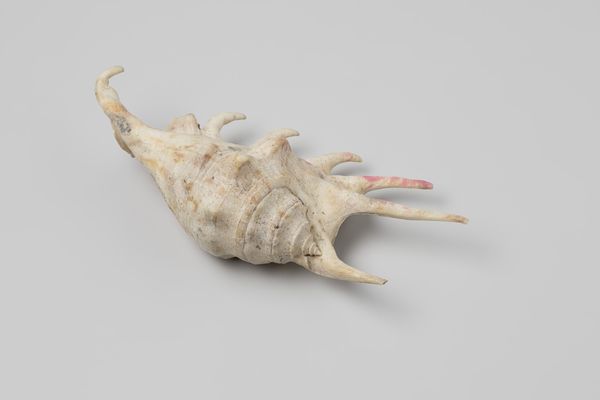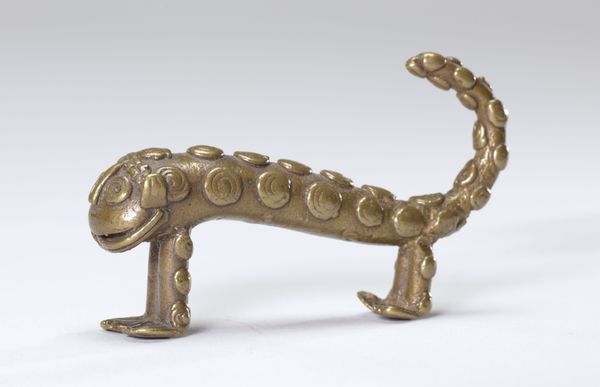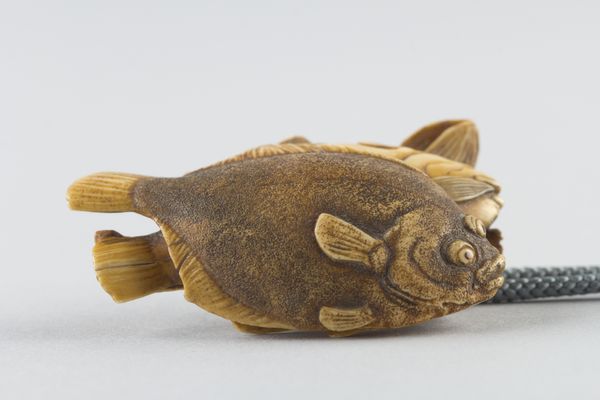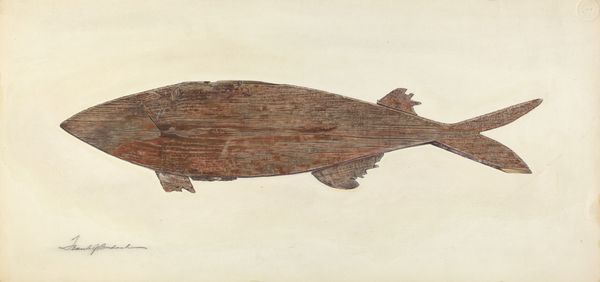
ceramic, earthenware, sculpture
#
ceramic
#
round design
#
figuration
#
earthenware
#
sculpture
#
ceramic
#
indigenous-americas
Dimensions: 2 1/2 × 7 3/16 × 2 1/4 in. (6.35 × 18.26 × 5.72 cm)
Copyright: Public Domain
Curator: Before us is a striking object from the Minneapolis Institute of Art, a ceramic canteen dating from around 1884-1885. It is entitled "Canteen in the form of a jaguar" and attributed to the A'shiwi people, also known as the Zuni. Editor: My immediate reaction is its stillness, an incredible restraint in the representation of such a powerful animal. There’s also a gentle humor to it, something endearing. Curator: It's interesting you note that. Formally, it’s the geometry of simple volumes that define it. Observe how the cylindrical body connects to these rather petite legs and a minimally defined head. The dark spots on the pale surface establish a balanced rhythm across the piece. Editor: And that rhythm probably carries layers of cultural meaning. Jaguars held a complex position in many Indigenous American cultures; power, yes, but also liminality, the ability to move between worlds. A canteen in this form might have carried far more than just water. Curator: Absolutely. The object's functionality is crucial here. It transcends mere sculpture because of its use. The vessel and spout become integrated formal elements that underscore its practical application as much as its symbolic value. Editor: Exactly. Who carried this? What rituals did it witness? What stories were told around it? These questions tie it to broader patterns of indigenous life and resistance to colonization, perhaps. The jaguar can symbolize that resilient spirit. Curator: The formal simplicity actually strengthens that potential. There’s nothing superfluous. The design communicates the essence of "jaguar-ness", allowing meaning to flow readily. Editor: The beauty in that functional design, beyond the mere aesthetic appeal. A form reflecting a world view. Well, considering its age and place of origin, I am humbled by the stories held in this piece of earthenwork. Curator: I agree. Focusing on its formal aspects deepened my understanding and appreciation for the piece. A clear demonstration of artistic innovation, even within traditional boundaries.
Comments
No comments
Be the first to comment and join the conversation on the ultimate creative platform.
